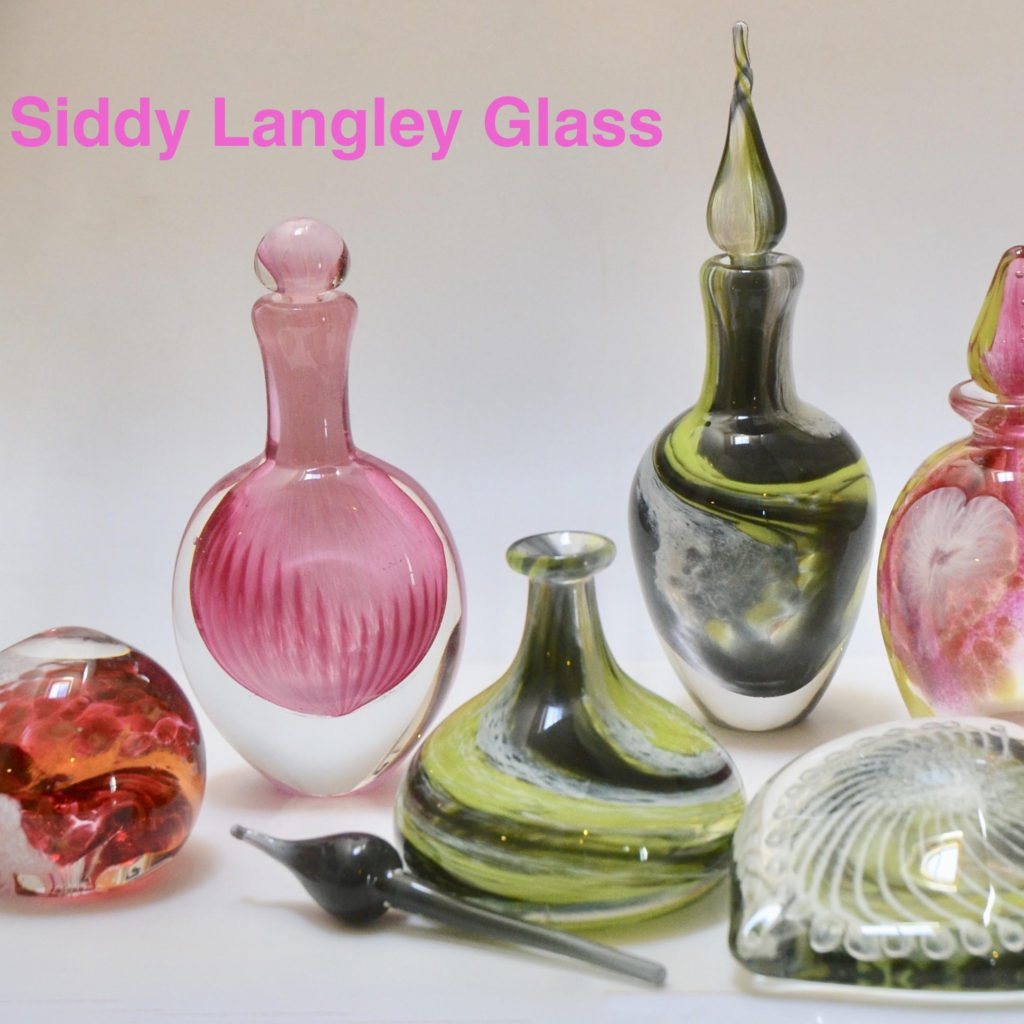How would you explain your organization in 300 words or less?
I have been working in glass for over forty years and it is still my passion. I made a conscious decision many years ago not to work as a production studio but to make one-off pieces or very small run designs. The result is that each piece I embark upon is a new adventure and this keeps the whole process alive for me. As soon as you publish a catalogue you are restrained into making infinite pieces that look like the one depicted. For me, that would suck all the joy out of the process. I live in a very beautiful part of the Southwest in the UK. I am surrounded by fields and wildlife and nature which is lucky really as those are the things that inspire my work.
I am unusual in that I work alone. Traditionally glassmaking has been considered a team enterprise or, at the very least, one needed to have an assistant. I have devised means of working alone and I love the freedom that gives me. Having said that, I am rarely truly alone in my studio as my dogs like to lie in front of the gloryhole so that I have to step over them to re-heat the piece. Health and safety would have a fit!
How is sustainability incorporated into your process?
The most important way that sustainability is incorporated into my practice is the heat recovery. Heat recovery starts from the very beginning of the process with a recuperator attached to the furnace. The exhaust gases from the furnace are channeled through a heat exchanger which recovers the heat and pre-heats the incoming air before it meets with the gas inside the furnace chamber. Heat that does escape into the building from either the furnace or the gloryhole is recovered with an air source heat pump which turns it into hot water for the house. Running the furnace at a much lower temperature than most glassmakers do, reduces fuel bills and extends the life of the refractories and pots etc.
The studio has solar PV’s which generate much of the energy for the annealing kilns. I have changed from using lead crystal to using a soda class and have stopped using chemicals for processes such as iridising or acid etching the glass. I waste nothing. Every scrap (yes, even the floor sweepings!) of waste glass is sorted through. Clear glass gets washed and remelted in the furnace and coloured glass is turned into coasters and wall art. In years gone by I had a commercial waste contract (a big blue bin emptied weekly at vast expense) whereas now I have little more than a dustpan’s worth of waste a week. All packaging is recycled and re-used. There is an obvious upside to the environment to these practices but there is also an upside to me personally as my running costs are considerably lower now than they were 10 years ago.
What was the reason you decided to pursue sustainable practices?
The environmental impact of my workshop had been making me uneasy for many years. The energy requirements, the chemicals, the waste of materials kept me awake at night. In 2012 I decided enough was enough. I had either to find a more sustainable way to blow glass or I must consider giving up. It was a dilemma – on the one hand, it would be a tragedy if old crafts like glassmaking and blacksmithing were to die out but, on the other hand, how could one make glass blowing have less of an environmental impact? The answer for me was to build an eco-house with a glass studio attached so that the waste heat from the studio was recovered to provide the hot water and underfloor heating for the house.
What would you like to see in the future for sustainability in art?
I think all artists and craftspeople should examine their working practices on a regular basis to see if there are better ways of doing things. New technologies can sometimes bring innovations which we may overlook if we are too rigid in our traditional ways of working.
As far as glassmaking goes I would love to see more viable forms of sustainable energy such as energy from hydrogen.
What impact are you seeing & how do you measure success?
Using more sustainable practices I have almost halved my energy usage from 10 years ago. I see that as a “win” but there is still a long way to go to make glass-making truly environmentally friendly.
How has the COVID-19 pandemic impacted your studio or organization?
From a “making” point of view I have been blessedly unaffected by Covid-19. Being able to work alone and therefore have no employees means I have been able to carry on glass blowing throughout the past year.
The financial implications of Covid -19 are another matter. At the start of the pandemic I enrolled in a four week webinar learning how to make a better website. With galleries closed and exhibitions cancelled it has been important to have a website that facilitates online selling. The new website has hugely increased my online sales which has enabled me to weather the financial impact of closed outlets and events




